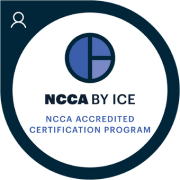EMS 2024 LLSA Reading List
Air Medical Services
Lyng JW, Braithwaite S, Abraham H, et al. Appropriate air medical services utilization and recommendations for integration of air medical services resources into the EMS system of care: a joint position statement and resource document of NAEMSP, ACEP, and AMPA. Prehosp Emerg Care 2021 Nov-Dec;25(6):854-73. doi: 10.1080/10903127.2021.1967534. Epub 2021 Oct 4. PMID: 34388053.
- ___________________ occurs when an air ambulance agency actively seeks flight missions that have been turned down by other agencies.
- The three generally accepted reasons for the use of an air ambulance are ___________________, ___________________, and ___________________.
Airway Management
Wang CH, Lee AF, Chang WT, et al. Comparing effectiveness of initial airway interventions for out-of-hospital cardiac arrest: a systematic review and network meta-analysis of clinical controlled trials. Ann Emerg Med 2020 May;75(5):627-36. doi: 10.1016/j.annemergmed.2019.12.003. Epub 2020 Jan 23. PMID: 31983493.
- In a meta-analysis of 11 trials comparing intubation, supraglottic airway placement, and bag valve mask (BVM) ventilation in out-of-hospital cardiac arrest patients, ___________________ was associated with highest rates of return of spontaneous circulation (ROSC) but not survival or neurological outcomes.
Behavioral Emergencies
Holland D, Glober N, Christopher S, Zahn E, Lardaro T, O’Donnell D. Prehospital sedation with ketamine vs. midazolam: repeat sedation, intubation, and hospital outcomes. Am J Emerg Med 2020 Sep;38(9):1748-53. doi: 10.1016/j.ajem.2020.05.011. Epub 2020 May 11. PMID: 32738471.
- Comparing ketamine to midazolam for prehospital sedation in adult patients, there was no statistically significant differences in changes in ___________________, use of ___________________, or need for ___________________.
- Comparing ketamine to midazolam for prehospital sedation in adult patients, in 90 minutes after the first dose, there was a statistically significant increase in repeat dosing associated with ___________________.
Kupas DF, Wydro GC, Tan DK, Kamin R, Harrell AJ 4th, Wang A. Clinical care and restraint of agitated or combative patients by emergency medical services practitioners. Prehosp Emerg Care 2021 Sep-Oct;25(5):721-3. doi: 10.1080/10903127.2021.1917736. Epub 2021 Jun 7. PMID: 33877949.
- When possible, ___________________ should be the initial technique in controlling a patient with agitated behavior.
- The ___________________ is a score that can be used to assess initial agitation and effectiveness of sedation when restraining patients.
Cardiac Arrest
Cheskes S, Verbeek PR, Drennan IR, et al. Defibrillation strategies for refractory ventricular fibrillation. N Engl J Med 2022 Nov 24;387(21):1947-56. doi: 10.1056/NEJMoa2207304. Epub 2022 Nov 6. PMID: 36342151. Pair with associated editorial: Sasson C, Haukoos J. Defibrillation after cardiac arrest – is it time to change practice? N Engl J Med 2022 Nov 24;387(21):1995-6. doi: 10.1056/NEJMe2213562. Epub 2022 Nov 6. PMID: 36342174.
- Vector-change (VC) defibrillation refers to switching pads to the ___________________ position.
- In a randomized and controlled trial of DSED or VC defibrillation for the treatment of ___________________ during out-of-hospital cardiac arrest, survival to hospital discharge was more common in patients who received DSED or VC defibrillation than standard defibrillation.
Community Paramedicine
Abrashkin KA, Washko JD, Li T, et al. Video or telephone? A natural experiment on the added value of video communication in community paramedic responses. Ann Emerg Med 2021 Jan;77(1):103-9. doi: 10.1016/j.annemergmed.2020.04.026. Epub 2020 Jun 10. PMID: 32534834.
- The presence of video communication enhanced the clinical evaluation of the patient but was not associated with the odds of ___________________.
Operations
Whitfield D, Bosson N, Habrat D, et al. Critical medication shortages: effective strategies to maintain continuous medication availability for emergency medical services. Prehosp Emerg Care 2020 Mar-Apr;24(2):290-6. doi: 10.1080/10903127.2019.1619001. Epub 2019 May 31. PMID: 31084511.
- The most common medication reported for shortage was ___________________.
Patient Safety
Troyer L, Brady W. Barriers to effective EMS to emergency department information transfer at patient handover: a systematic review. Am J Emerg Med 2020 Jul;38(7):1494-1503. doi: 10.1016/j.ajem.2020.04.036. Epub 2020 Apr 15. PMID: 32321683.
- ___________________ is the only intervention that demonstrated a significant improvement in the volume of data transferred at handovers.
Pediatrics
Moore B, Shah MI, Owusu-Ansah S, et al.; American Academy of Pediatrics, Committee on Pediatric Emergency Medicine and Section on Emergency Medicine EMS Subcommittee; American College of Emergency Physicians, Emergency Medical Services Committee; Emergency Nurses Association; Pediatric Committee; National Association of Emergency Medical Services Physicians, Standards and Clinical Practice Committee; National Association of Emergency Medical Technicians, Emergency Pediatric Care Committee; Pediatric readiness in emergency medical services systems; Policy Statement; Organizational Principles to Guide and Define the Child Health Care System and/or Improve the Health of All Children. Pediatric readiness in emergency medical services systems. Ann Emerg Med. 2020 Jan;75(1):e1-e6. doi: 10.1016/j.annemergmed.2019.09.012. PMID: 31866028.
- ___________________ encompasses the presence of equipment and medications, usage of guidelines and policies, availability of education and training, incorporation of performance improvement practices, and integration of EMS physician medical oversight to equip EMS systems to deliver optimal care to children.
Prehospital Management
Sobieraj DM, Martinez BK, Miao B, et al. Comparative effectiveness of analgesics to reduce acute pain in the prehospital setting. Prehosp Emerg Care 2020 Mar-Apr;24(2):163-74. doi: 10.1080/10903127.2019.1657213. Epub 2019 Sep 23. PMID: 31476930.
- Using Emergency Department indirect evidence, opioids are clinically ___________________ to ketamine for reduction of pain in the preshospital setting.
- Opioids compared to ketamine may cause fewer ___________________, less ___________________, but more ___________________.
Trauma Triage
Newgard CD, Fischer PE, Gestring M, et al. National guidelines for the field triage of injured patients: recommendations of the National Expert Panel on Field Triage, 2021. J Trauma Acute Care Surg In press.
- The ___________________ is defined by the heart rate divided by blood pressure and has been added to the 2021 National Guidelines for Field Triage of Injured Patients.
- In the 2021 National Guidelines for Field Triage of Injured Patients, ___________________ or ___________________ has replaced GCS <= 13 to identify risk of severe neurologic injury.
Uribe-Leitz T, Jarman MP, Sturgeon DJ, et al. National study of triage and access to trauma centers for older adults. Ann Emerg Med 2020 Feb;75(2):125-35. doi: 10.1016/j.annemergmed.2019.06.018. Epub 2019 Nov 13. PMID: 31732372.
- In defining undertriage as nontrauma center care in patients 65 years or older with an injury severity score (ISS) of 16 or greater, ___________________% were undertriaged.
- Among Medicare beneficiaries with injury severity score (ISS) of 16 or greater in this study, increasing ___________________ and increasing ___________________ to a trauma center were associated with undertriage.
Click to see all answers
Air Medical Services
- Reverse helicopter shopping occurs when an air ambulance agency actively seeks flight missions that have been turned down by other agencies.
- The three generally accepted reasons for the use of an air ambulance are advanced care, expedited transport, and extrication from austere locations.
Airway Management
- In a meta-analysis of 11 trials comparing intubation, supraglottic airway placement, and bag valve mask (BVM) ventilation in out-of-hospital cardiac arrest patients, supraglottic airway placement was associated with highest rates of return of spontaneous circulation (ROSC) but not survival or neurological outcomes.
Behavioral Emergencies
- Comparing ketamine to midazolam for prehospital sedation in adult patients, there was no statistically significant differences in changes in Glasgow Coma Scale (GCS) scores, use of bag valve mask (BVM) ventilations, or need for intubation.
- Comparing ketamine to midazolam for prehospital sedation in adult patients, in 90 minutes after the first dose, there was a statistically significant increase in repeat dosing associated with ketamine.
- When possible, verbal de-escalation should be the initial technique in controlling a patient with agitated behavior.
- The Richmond Agitation Sedation Scale is a score that can be used to assess initial agitation and effectiveness of sedation when restraining patients.
Cardiac Arrest
- Vector-change (VC) defibrillation refers to switching pads to the anterior-posterior position.
- In a randomized and controlled trial of DSED or VC defibrillation for the treatment of refractory ventricular fibrillation during out-of-hospital cardiac arrest, survival to hospital discharge was more common in patients who received DSED or VC defibrillation than standard defibrillation.
Community Paramedicine
- The presence of video communication enhanced the clinical evaluation of the patient but was not associated with the odds of Emergency Department transport.
Operations
- The most common medication reported for shortage was epinephrine (0.1 mg/mL).
Patient Safety
- Standardization is the only intervention that demonstrated a significant improvement in the volume of data transferred at handovers.
Pediatrics
- Pediatric readiness encompasses the presence of equipment and medications, usage of guidelines and policies, availability of education and training, incorporation of performance improvement practices, and integration of EMS physician medical oversight to equip EMS systems to deliver optimal care to children.
Prehospital Management
- Using Emergency Department indirect evidence, opioids are clinically similar to ketamine for reduction of pain in the preshospital setting.
- Opioids compared to ketamine may cause fewer total adverse events, less dizziness, but more respiratory depression.
Trauma Triage
- The shock index is defined by the heart rate divided by blood pressure and has been added to the 2021 National Guidelines for Field Triage of Injured Patients.
- In the 2021 National Guidelines for Field Triage of Injured Patients, unable to follow commands or motor Glasgow Coma Score < 6 has replaced GCS <= 13 to identify risk of severe neurologic injury.
- In defining undertriage as nontrauma center care in patients 65 years or older with an injury severity score (ISS) of 16 or greater, 46% were undertriaged.
- Among Medicare beneficiaries with injury severity score (ISS) of 16 or greater in this study, increasing age and increasing distance to a trauma center were associated with undertriage.



